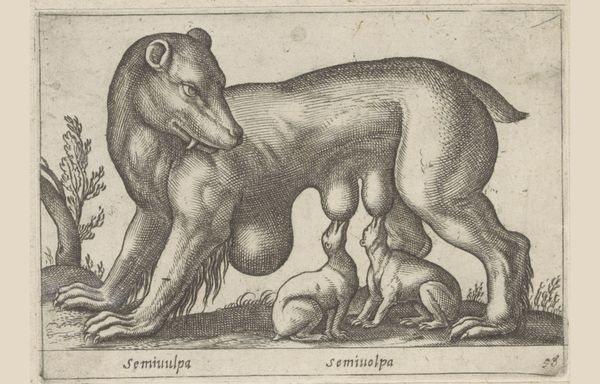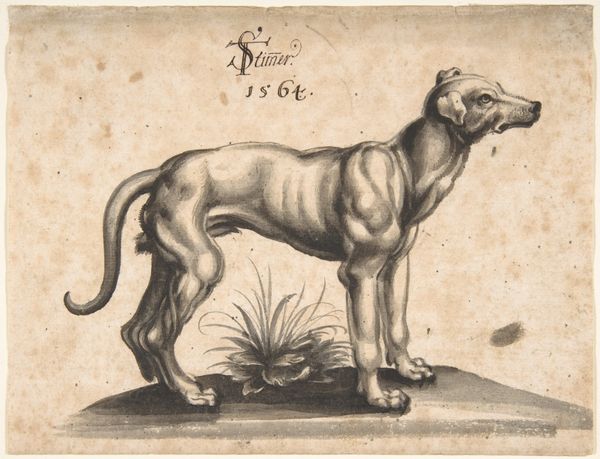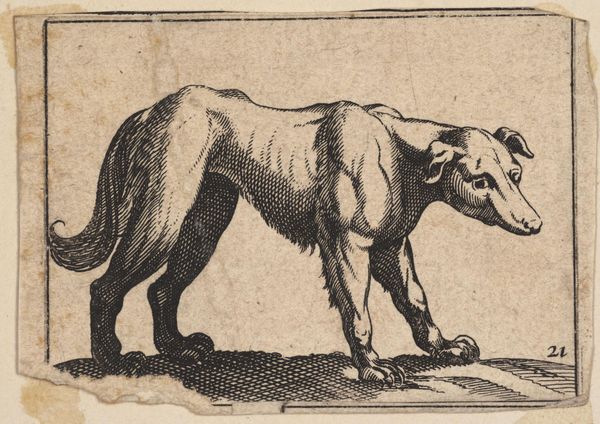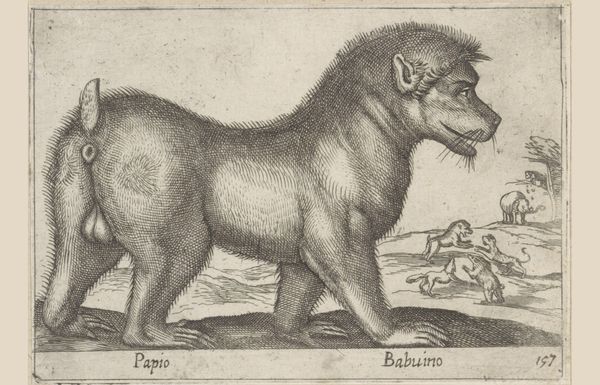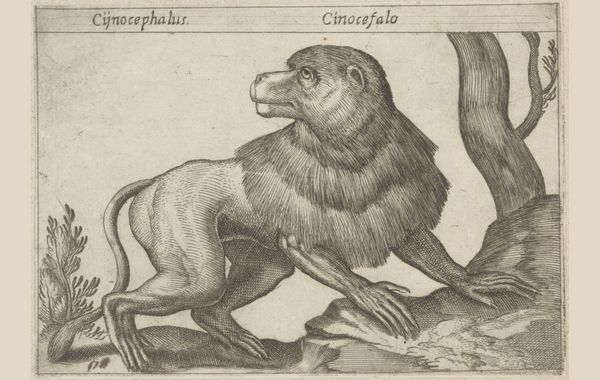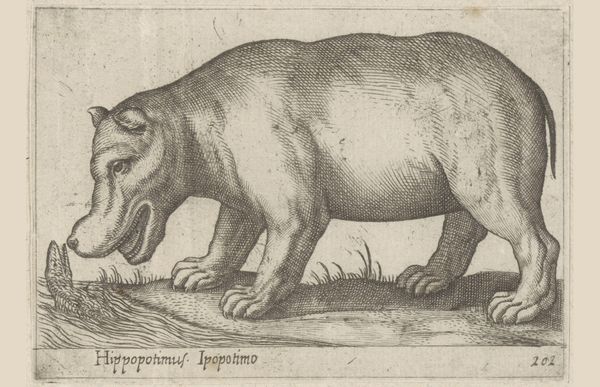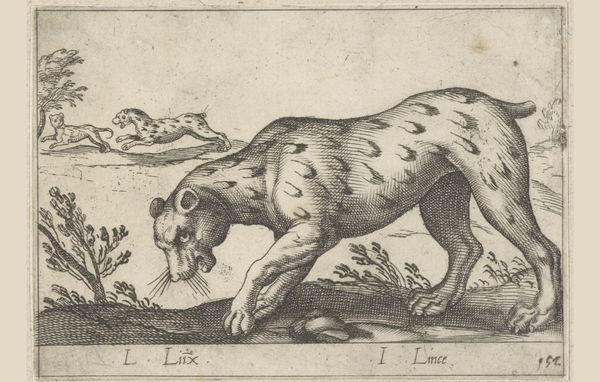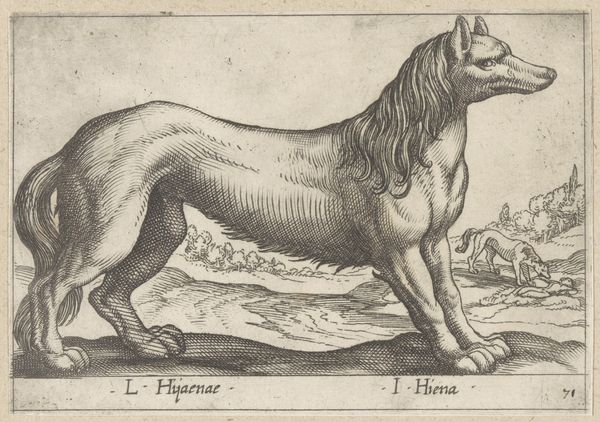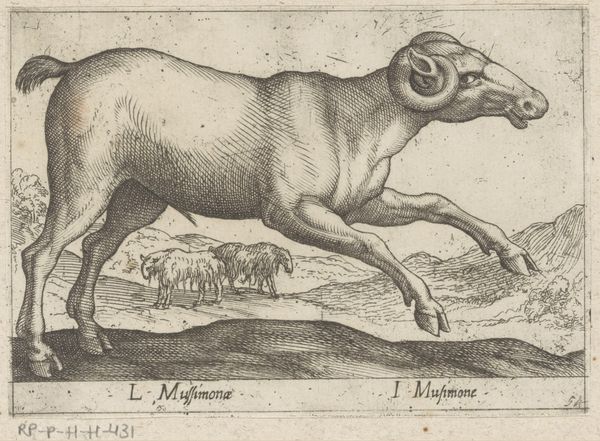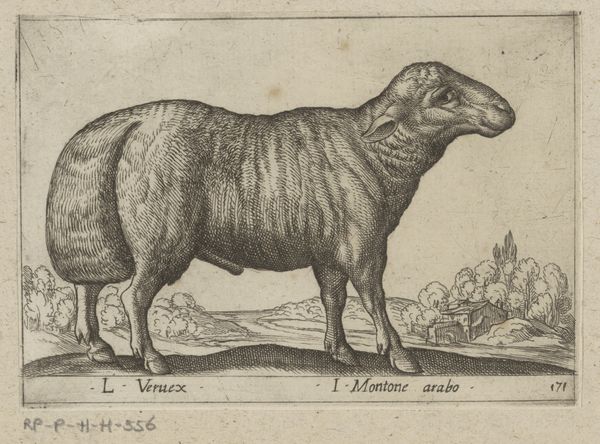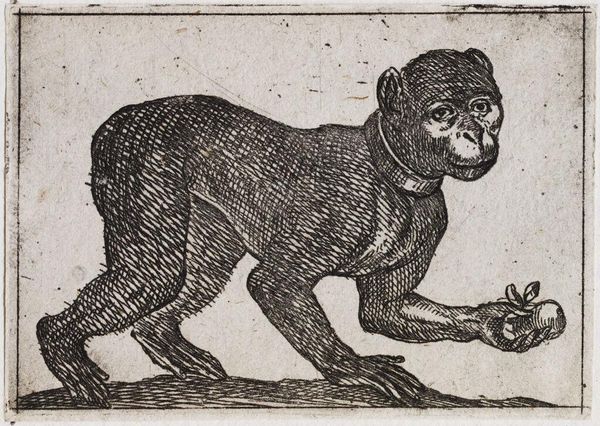
#
pencil drawn
#
toned paper
#
light pencil work
#
pencil sketch
#
caricature
#
personal sketchbook
#
pencil drawing
#
sketchbook drawing
#
portrait drawing
#
pencil work
Dimensions: height 95 mm, width 137 mm
Copyright: Rijks Museum: Open Domain
Editor: So, this is "Aap," or "ape" in Dutch, created before 1650, and attributed to Antonio Tempesta. It’s currently held at the Rijksmuseum. The first thing that strikes me is how…serious the monkey looks, almost human in its posture. What do you see in this piece? Curator: The immediate element that captures my attention is how this image carries the weight of centuries of symbolic association. Consider the date; before 1650. What did the symbol of the ape signify then? It wasn’t just a portrayal of an animal; apes in art often served as stand-ins for human follies. Editor: Human follies? So like, a commentary? Curator: Precisely. Often vanity or base instincts. And look closely. The rendering has a specific intent. What does the animal's almost pleading gaze suggest to you, in light of what it represents? Editor: Hmm, it's not just a simple depiction, is it? It’s more loaded with meaning than I initially thought, as if the monkey is silently asking us to recognize ourselves in it. Curator: Exactly! That gaze bridges the gap between the animal and the human. How fascinating that Tempesta chose *this* subject, using his talent to not only render, but to make us question our own behaviors through the symbolic shorthand of the ape. It is cultural memory, rendered in fur and ink. Editor: I see it so differently now, thank you. What seemed like just a sketch of an ape really becomes a mirror reflecting human nature itself.
Comments
No comments
Be the first to comment and join the conversation on the ultimate creative platform.
